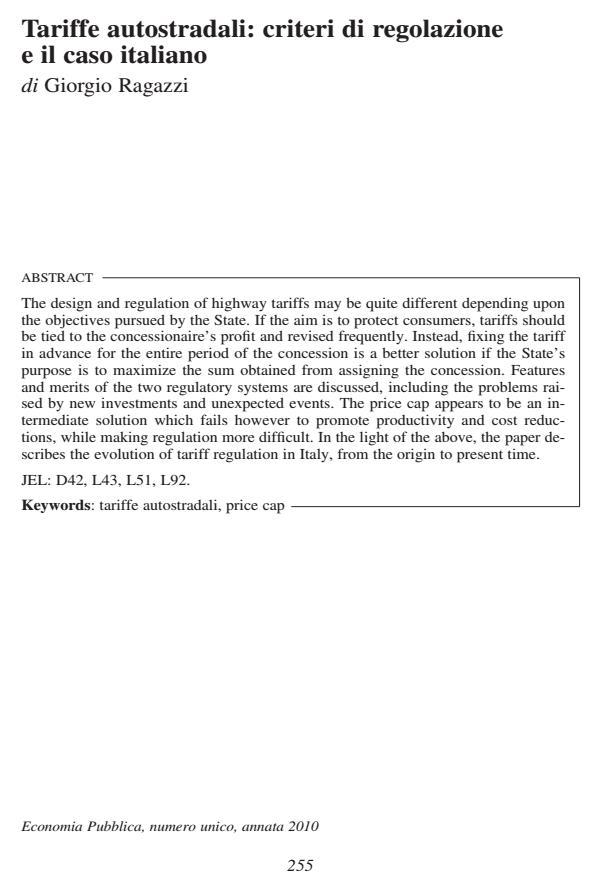Tariffe autostradali: criteri di regolazione e il caso italiano
Titolo Rivista ECONOMIA PUBBLICA
Autori/Curatori Giorgio Ragazzi
Anno di pubblicazione 2012 Fascicolo 2010/1-6
Lingua Italiano Numero pagine 24 P. 255-278 Dimensione file 510 KB
DOI 10.3280/EP2010-001011
Il DOI è il codice a barre della proprietà intellettuale: per saperne di più
clicca qui
Qui sotto puoi vedere in anteprima la prima pagina di questo articolo.
Se questo articolo ti interessa, lo puoi acquistare (e scaricare in formato pdf) seguendo le facili indicazioni per acquistare il download credit. Acquista Download Credits per scaricare questo Articolo in formato PDF

FrancoAngeli è membro della Publishers International Linking Association, Inc (PILA)associazione indipendente e non profit per facilitare (attraverso i servizi tecnologici implementati da CrossRef.org) l’accesso degli studiosi ai contenuti digitali nelle pubblicazioni professionali e scientifiche
The design and regulation of highway tariffs may be quite different depending upon the objectives pursued by the State. If the aim is to protect consumers, tariffs should be tied to the concessionaire’s profit and revised frequently. Instead, fixing the tariff in advance for the entire period of the concession is a better solution if the State’s purpose is to maximize the sum obtained from assigning the concession. Features and merits of the two regulatory systems are discussed, including the problems raised by new investments and unexpected events. The price cap appears to be an intermediate solution which fails however to promote productivity and cost reductions, while making regulation more difficult. In the light of the above, the paper describes the evolution of tariff regulation in Italy, from the origin to present time.
Parole chiave:Tariffe autostradali, price cap
Jel codes:D42, L43, L51, L92.
Giorgio Ragazzi, Tariffe autostradali: criteri di regolazione e il caso italiano in "ECONOMIA PUBBLICA " 1-6/2010, pp 255-278, DOI: 10.3280/EP2010-001011